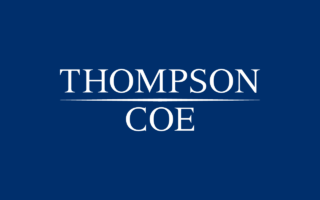Texas Supreme Court Attempts to Clarify Statutory Bad Faith Liability
Apr 7, 2017
On April 7, 2017, the Texas Supreme Court issued its opinion in USAA Texas Lloyds Co. v. Menchaca. The Supreme Court was called upon to decide whether the insured can recover policy benefits based on jury findings that the insurer violated the Insurance Code and the violation resulted in a loss of benefits that the insurer should have paid, even though the jury declined to find that the insurer failed to comply with the policy.
In Menchaca, the insured made a homeowner's property claim to USAA following Hurricane Ike. USAA sent an adjuster to investigate the claim. Based upon the adjuster's finding of minimal "covered" damage that did not exceed the policy's deductible, USAA paid no benefits. Approximately five months later, the insured requested a re-inspection. USAA sent a different adjuster, who generally confirmed the initial findings, and USAA again refused to pay benefits. The insured sued USAA for breach of the insurance policy and for unfair settlement practices under the Insurance Code. The case was tried to a jury. The first question on the breach of contract claim asked whether USAA "failed to comply with the terms of the insurance policy with respect to the claim for damages filed by [the insured] resulting from Hurricane Ike." The jury answered "No." Question 2 asked whether USAA engaged in various unfair or deceptive trade practices, including whether USAA refused "to pay a claim without conducting a reasonable investigation" with respect to the claim. The jury answered "Yes." Question 3 asked the jury to determine the insured's damages resulting from either USAA's failure to comply with the policy or its statutory violations, calculated as "the difference, if any, between the amount USAA should have paid [the insured] for her Hurricane Ike damages and the amount that was actually paid." The jury answered "$11,350."
Both parties moved for judgment in their favor. USAA argued that the insured was not entitled to statutory damages because the jury did not find that it failed to comply with the policy. The insured argued that she was entitled to judgment because the answers to Questions 2 and 3 were not conditioned on a "Yes" answer to Question 1. The trial court ultimately disregarded Question 1 and entered judgment in the insured's favor based upon the answers to Questions 2 and 3. The court of appeals affirmed.
The Supreme Court admitted that its prior cases on this issue had led to "substantial confusion" among the lower courts and that it hoped to "clarify our precedent" by announcing five rules addressing the relationship between contract claims under an insurance policy and tort claims under the Insurance Code. The five rules are:
1. The General Rule: An insured cannot recover policy benefits as damages for an insurer's statutory violation if the insured does not have a right to those benefits under the policy.
2. The Entitled-to-Benefits Rule: An insured who establishes a right to receive benefits under an insurance policy can recover those benefits as "actual damages" under Chapter 541 if the insurer's statutory violation causes the loss of policy benefits.
3. The Benefits-Lost Rule: An insured can recover benefits as actual damages under the Insurance Code – even if the insured has no right to those benefits under the policy – if the insurer's conduct caused the insured to lose that contractual right.
4. The Independent-Injury Rule: If an insurer's statutory violation causes an injury "truly" independent of the insured's right to recover policy benefits, the insured can recover those damages under the statute. In other words, the damages are separate from and differ from the benefits under the contract. The independent injury must be "caused" by a statutory violation and not be "predicated on" or "stem or flow from" denial of policy benefits. Although the Supreme Court recognizes this possibility, the opinion clearly suggests that this will be a rare occurrence-admitting that "[they] in fact have yet to encounter one."
5. The No-Recovery Rule: An insured cannot recover any damages based on an insurer's statutory violation unless the insured establishes a right to receive benefits under the policy or an injury independent of a right to benefits.
As often happens, the Menchaca decision raises many more questions than it answers. The Court did not give any guidance on when an act of statutory bad faith will be the "cause" of the loss of policy benefits. Causation is often the province of the jury, potentially resulting in more cases with the possibility of policy benefits as statutory violation damages. The Court did not discuss the proper jury submission to entitle an insured to recover policy benefits under the entitled-to-benefits rule.
The decision is 37 pages long. It can be accessed here.







